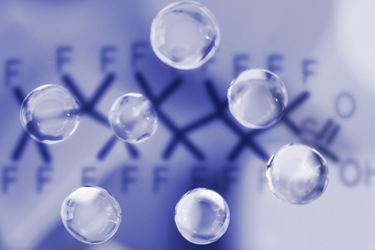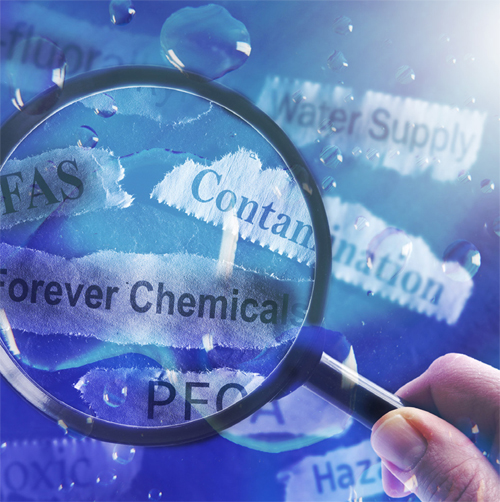PFAS Policy In 2025: Why It's Time To Go Beyond Remediation
By Simon Gatcliffe

The most common techniques for disposing of PFAS may no longer be good enough.
In recent years, the phrase “forever chemicals” has become near synonymous with water contamination itself. Per- and polyfluoroalkyl substances — also known as PFAS — were once a popular additive to industrial and consumer goods thanks to traits such as resistance to stains, water, and heat. However, they have since become a key target of the U.S. EPA and other groups.
Much of this attention can be attributed to the powerful carbonfluorine bond at the heart of all forever chemicals — one of the very strongest in nature — meaning that PFAS do not break down naturally. Throw in decades of widespread usage, and PFAS can be found at every stage of the water cycle — including 45% of the nation’s drinking water1 and maybe even your favorite beer.2
Combined with a growing bank of evidence linking PFAS to decreased fertility, developmental delays, and even cancer,3 it’s easy to see why PFAS are now such a hot topic in the water industry. However, with an increasingly complex legislative landscape — including some relatively recent changes — it can be hard to see the wood for the trees. What’s more, with the total cost of cleanup settlements constantly on the rise, water operators need to be aware of the stakes at play.
PFAS Under The Microscope
In April 2024, the Biden-Harris Administration introduced some of the most stringent PFAS regulations in the world in a landmark effort to tackle PFAS pollution in drinking water. Most notably, the EPA imposed maximum limits of four nanograms per liter for two of the most well-researched and widespread compounds under the PFAS umbrella — perfluorooctanoic acid (PFOA) and perfluorooctane sulfonate (PFOS).4 This is the equivalent of just four parts per trillion.
Given that this is the lowest possible level at which PFAS can be physically detected, and coupled with a maximum contaminant level goal (MCLG) of zero, this demonstrates a zero-tolerance policy for PFAS, and that there is no level of accepted risk for these contaminants.
However, many readers with one eye on the news will be sure to note that this executive action has recently been subject to revisions from the Trump Administration, with a decision to maintain some PFAS limits but adjust others.5
 This includes a wave of recent revisions that saw the maximum contaminant levels (MCLs) for PFOA and PFOS retained, but the compliance deadline for public water systems pushed back from 2029 to 2031.6 The limits of 10 nanograms per liter set by the Biden-Harris Administration on four other chemicals — GenX, PFHxS, PFNA, and PFBS — have been rescinded and will be reconsidered, though this area is still recognized as a bipartisan issue and is broadly supported.
This includes a wave of recent revisions that saw the maximum contaminant levels (MCLs) for PFOA and PFOS retained, but the compliance deadline for public water systems pushed back from 2029 to 2031.6 The limits of 10 nanograms per liter set by the Biden-Harris Administration on four other chemicals — GenX, PFHxS, PFNA, and PFBS — have been rescinded and will be reconsidered, though this area is still recognized as a bipartisan issue and is broadly supported.
While some may take the view that this represents a softening of approach, it’s important to note the wider context. Amid a wave of rollbacks on environmental policy from the Trump Administration, the fact that the limits for PFOA and PFOS have remained is significant in and of itself. These are still among the strictest PFAS regulations in the world, and the longterm outlook for these chemicals remains very much zero tolerance.
Act Now Or Pay Later
Regulations aside, the growing number of PFAS lawsuits may be enough to make anyone in the industry reconsider their position on forever chemicals. In the U.S. alone, nearly 10,000 court cases related to PFAS exposure have been filed in the past 25 years, with settlement fees already amounting to $16.7 billion and growing.7
And it’s showing no signs of slowing down just yet. In just the past few months, a major farm in Maryland has been hit with a sizeable lawsuit,8 while PFAS manufacturer 3M recently agreed to settle for an eye-watering sum of $285 million in this year alone, with the total possibly reaching $450 million over the next 25 years — the largest single clean-water settlement in New Jersey’s history.9 Combined with a tightening regulatory landscape, there is now a renewed incentive to get ahead of the curve on PFAS management. However, it should be recognized that current PFAS remediation techniques may no longer be up to scratch.
For example, landfill and incineration — two of the most common techniques used to dispose of PFAS — simply move the problem from one place to another. Inevitably, this will lead forever chemicals to reenter the water cycle at a later stage, posing a significant risk of compliance.
Given the stringent limits on PFOA and PFOS in particular, such narrow margins for error cannot be left to chance. The only way to be truly assured that a PFAS is not a risk is to destroy it. This is something that has, until recently, been thought impossible. However, years of innovation have led to the creation of electrochemical oxidation reactors, such as the Florenox™ range from Arvia Technology, that can destroy PFAS from concentrates. Florenox reactors feature a patentpending advanced inert electrode material (Nyex.3™) that promotes the formation of highly reactive hydroxyl radicals that are capable of targeting and breaking the carbon-fluorine bond.
In this lies an opportunity to provide the best defense against tightening regulation and possible legal action. While further action from the Trump Administration may yet follow, it is clear that, despite some rollbacks, tolerance for PFAS is only heading in one direction and demands action.
References
- https://www.usgs.gov/news/national-news-release/tap-water-study-detectspfas-forever-chemicals-across-us
- https://nypost.com/2025/05/26/health/forever-chemicals-found-in-us-beerwhere-the-worst-is-brewed/
- https://www.epa.gov/pfas/our-current-understanding-human-health-andenvironmental-risks-pfas
- https://www.epa.gov/newsreleases/biden-harris-administration-finalizes-firstever-national-drinking-water-standard
- https://www.nytimes.com/2025/05/14/climate/pfas-zeldin-trumpadministration.html
- https://www.epa.gov/newsreleases/epa-announces-it-will-keep-maximumcontaminant-levels-pfoa-pfos
- https://chemsec.org/just-the-start-the-growing-legal-battle-over-pfas-ineurope/
- https://www.thecooldown.com/green-business/perdue-farms-lawsuit-pfasforever-chemicals/
- https://www.lawyersandsettlements.com/legal-news/PFAS-Health-Risks/3msettle-pfas-lawsuit-450-million-24159.html
About The Author
 Simon Gatcliffe, CEO of Arvia Technology, has led the commercial growth and innovation of Arvia’s solutions since 2020. In his role, he has provided guidance to organizations in life sciences and agrochemicals, and frequently participates in major industry conferences such as Aquatech, World Water Tech, and WEFTEC. He regularly advises businesses in the U.K. and internationally on navigating the challenges of water treatment.
Simon Gatcliffe, CEO of Arvia Technology, has led the commercial growth and innovation of Arvia’s solutions since 2020. In his role, he has provided guidance to organizations in life sciences and agrochemicals, and frequently participates in major industry conferences such as Aquatech, World Water Tech, and WEFTEC. He regularly advises businesses in the U.K. and internationally on navigating the challenges of water treatment.
